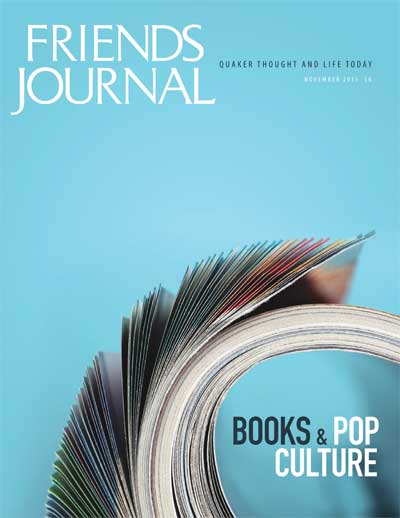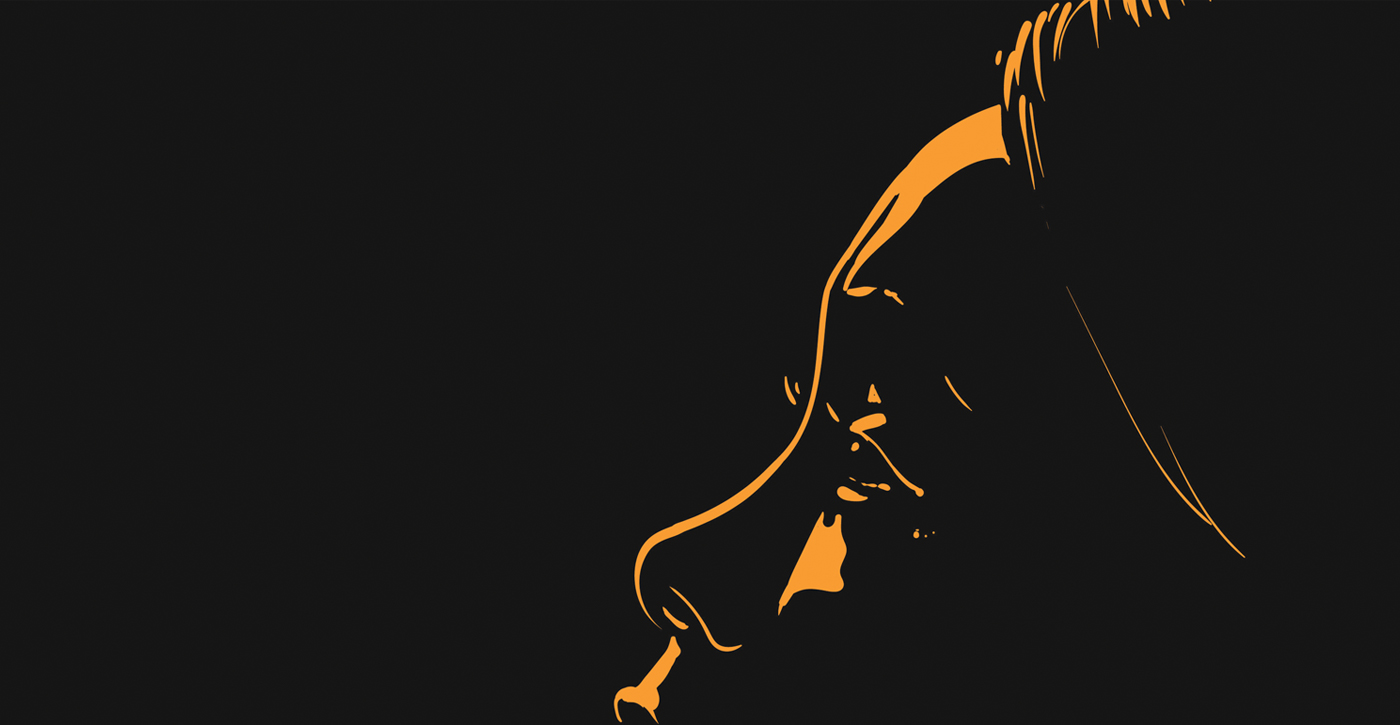 There are questions that continually resurface in Quaker studies: Why did the Religious Society of Friends survive the turmoil of seventeenth-century England when other similar movements did not? Why did the Society flourish in its early years and then settle into a solid association of like-minded people who institutionalized its genius without submerging the Spirit?
There are questions that continually resurface in Quaker studies: Why did the Religious Society of Friends survive the turmoil of seventeenth-century England when other similar movements did not? Why did the Society flourish in its early years and then settle into a solid association of like-minded people who institutionalized its genius without submerging the Spirit?
Notwithstanding the subsidence of its original enthusiasm, the fractious divisions in North America, and the relatively small number of Friends in the world today, Quakerism has perpetuated a collective method and cultural bearing that continues to be replicated not only among Friends but across a wide front of social settings.
We know a good deal from excellent studies on the unfolding history of Quakerism, and we know that the culture of Friends has had significant influence in the world much beyond its immediate range of associations. While the evidence for this influence is easily marshaled, the question of transmission, of replication, continues to tantalize. If we could see a bit more clearly into the dynamics of this influence, we might be able to extend the vitality of Quaker witness and work in the world today. With this in mind, I would like to introduce a Quaker Meme Project.
At the end of his 1976 book, The Selfish Gene, Richard Dawkins introduced the concept of the “meme” as a way to understand the uniqueness of human culture within the planetary array of life-forms. Although other animals do have forms of culture, the human animal has a capacity for culture and its transmission that is so extraordinary it now threatens to overrun and ruin the larger planetary, biotic support system on which the whole commonwealth of life depends. Understanding human culture in both its creative and destructive modes is, therefore, of signal importance.
How does this extraordinary capacity for culture work? If it were better understood, it might be possible to steer this capacity in ways that make things better for all the passengers on “Spaceship Earth,” instead of worse. Dawkins proposed the “meme,” analogous to the “gene,” as a way to understand the dynamics of human cultural evolution. (For further reading see The Meme Machine by Susan Blackmore and Re:Imagining Change by Patrick Reinsborough and Doyle Canning.)
A meme is to cultural life as a gene is to biological life. A meme is a unit of self-replicating cultural guidance that spreads, similar to a virus, from imagination to imagination. A meme is a discrete package of cultural information, insight, and understanding that, in story form, replicates specific elements of culture within populations, between populations, and from generation to generation.
Quaker testimonies are a prime example of memes and, taken as a collective unit of lived witness, are a kind of ethical super-meme, a comprehensive path of guidance. Both Albert Schweitzer’s ethic of “Reverence for Life” and Aldo Leopold’s “Land Ethic” work at this level as well. These thoughts have prompted me to think about other Quaker memes and the way they have worked historically and are still working at the present time. Here are six Quaker memes that seem to me especially significant. I suspect that others may quickly think of additional candidates for this Quaker Meme Project. I would be happy to receive suggestions, along with an explanatory statement for each meme, such as I have composed below.
Six Quaker Memes

Continuing Revelation
It is no accident that Quakers have been pioneers in education and in the fields of human and social development. Nor is it surprising that many Friends have been attracted to the sciences and that scientists have been attracted to Quakerism. Into a milieu of dogmatic theology, George Fox and other early Friends projected a new horizon of spiritual life that was centered on the experience of direct learning from the immediate counsel of an Inward Teacher. This came to be known as continuing revelation. Fox insisted that a discipline of listening and learning is fundamental to authentic spiritual life. This shift in guidance from a fixed theological formula centered on eternal, personal security to engagement with an open horizon of learning and a larger concern for human betterment was launched into the Christian tradition, in large part, by Quakerism. Friends quickly realized this openness to learning was the potential of all genders and of every rank, race, culture, and creed. This shift has now deeply permeated the culture of Christendom and has helped ease religious thinking into an evolutionary worldview.

Human Betterment
In the late seventeenth century, a Quaker cloth merchant, John Bellers, drafted a series of proposals for providing a route out of poverty for the wretchedly poor in England, which he addressed to Parliament and to wealthy Friends. He mapped out a fiscally detailed plan for the establishment of new towns cooperatively organized for agricultural and industrial production, complete with schools for the young, vocational training for youth and unskilled adults, and healthcare for all. He also presented to government a fully costed plan for universal public healthcare. Thus began systematic attention by Friends to the conditions of poverty and inequity, and on what can be done to advance “human betterment.” A century and a half later, Robert Owen brought Beller’s vision to life with his “villages of cooperation” that effectively launched the modern Cooperative Movement.
In the late 1950s and early 1960s, Quaker educator and social philosopher Morris Mitchell and Quaker economist and systems analyst Kenneth Boulding began using the expression “human betterment.” They developed this concept as a way of talking about positive scenarios of social and economic development that did not rely on the idea of progress as defined by endlessly expanding consumerism and a never-ending increase in the Gross Domestic Product. Quaker social action has been instrumental in defining human betterment in this distinct way.
The concept of human betterment is now widely used with reference to the basic material conditions of security and dignity while, at the same time, unfolding an approach to social, cultural, and spiritual development that is not tied to the accumulation of wealth and superfluous goods.

“The Evolutionary Potential of Quakerism”
This Quaker meme was articulated by Kenneth Boulding in his 1964 James Backhouse Lecture at Australia Yearly Meeting. This summation is extracted from his lecture, published as a Pendle Hill pamphlet (number 136) of that name:
I suggest that the Society of Friends has a great intellectual task ahead of it, in the translation of its religious and ethical experiences and insights into a conscious understanding of the way in which the kind of love we treasure and covet can be produced, defended, and extended. . . . The task in question is spiritual as well as intellectual, in the sense that it involves not merely abstract knowledge, but love and community. . . . The search today is for a human identity which will permit us to live in peace . . . that true world community for which we all long. . . . I believe the next major step for the Society of Friends is to catch a vision of this great intellectual task. If it can respond to this vision its evolutionary potential may be great indeed.

“There is no way to peace; peace is the way.”
When A.J. Muste coined this aphorism in 1967, he was articulating the message that working for peace was not just a matter of strategy; it was a way of life. Muste was not a Quaker, but he was a long-time friend of Friends. Quakers immediately picked up Muste’s aphorism and made it their own, probably doing more than any other group to keep this spiritual wisdom flying high. American Friends Service Committee (AFSC) literally made flags bearing this message, which, from time to time, are given public display space on a cluster of street light poles in Center City Philadelphia. It is a saying that immediately sticks in the mind. It is instantly transparent, but then also requires excavation in order to unpack its full implication. A companion saying is, “We make the road by walking.”

War Is Not the Answer
In response to the Bush administration’s determination to launch a “war on terror” soon after 2001, Friends Committee on National Legislation (FCNL) adopted the proclamation, “War Is Not the Answer.” This Quaker meme was first articulated in Atlanta (Ga.) Meeting when member and peace activist Courtney Siceloff designed, produced, and distributed signs bearing this message. Requests for the signs rapidly increased. Judy Lumb, a member of Atlanta Meeting, explains what happened next: “Each week Courtney ordered enough signs to fill the increasing orders from all over the country and asked in meeting each First Day for volunteers to help package them for mailing. By that time (2003), the weekly order was in the thousands. Eventually it became clear that this had gotten too big for Atlanta Meeting to handle, so we asked FCNL if they could take on the project.”
FCNL so effectively deployed this initiative that it rose to the forefront of the movement to stop, and then counter, the U.S. invasion of Iraq. Window posters, banners, front yard signs, and bumper stickers were widely distributed and appeared in many non-Quaker settings, including on national television. A second phase of the FCNL campaign added the well-thought-out concept of “smart security” as the answer to the question, “If war is not the answer, what is?” In 2013, FCNL combined with AFSC to further define the “smart” answer as “shared security,” and the two organizations co-published a working paper under that title. The view that war is not the answer now seems to be gaining more recognition even among military leaders. This is the way an effective meme works.

Right Relationship
When the Moral Economy Project of Quaker Institute for the Future had completed its first book in 2008, the publisher’s editor suggested its title: Right Relationship (written by Peter G. Brown and Geoffrey Garver, with contributors Robert Howell, Steve Szeghi, and me). She pointed out that in treating the analysis of the moral economy from the standpoint of Quaker testimonies, the theme of “right relationship” repeatedly came into focus throughout the book. Without realizing it, the writing team had converged on a meme that summed up Quaker testimonies. A later respondent characterized this meme as “the ethic of right relationship.”
Right relationship is also a central concept in both Confucian and Buddhist thought, and is strongly evident in the respect with which many indigenous peoples honor the whole of Creation. It is certainly implied in the compassion and justice that the biblical tradition, at its best, exemplifies. The Quaker authors of Right Relationship came to see, in a deeply profound sense, that the economy and the ecosystem are both domains of relationship. The economy is about access to the means of life. The ecosystem is about the mutual interdependence of life communities. There is a deep sense of right relationship within a fully rounded understanding of these domains. Our spiritual tradition teaches us that in right relationship we touch the fullness of human meaning and the presence of the Divine. This Quaker meme is about elevating all areas of human policy and practice into the ethic of right relationship.






Comments on Friendsjournal.org may be used in the Forum of the print magazine and may be edited for length and clarity.